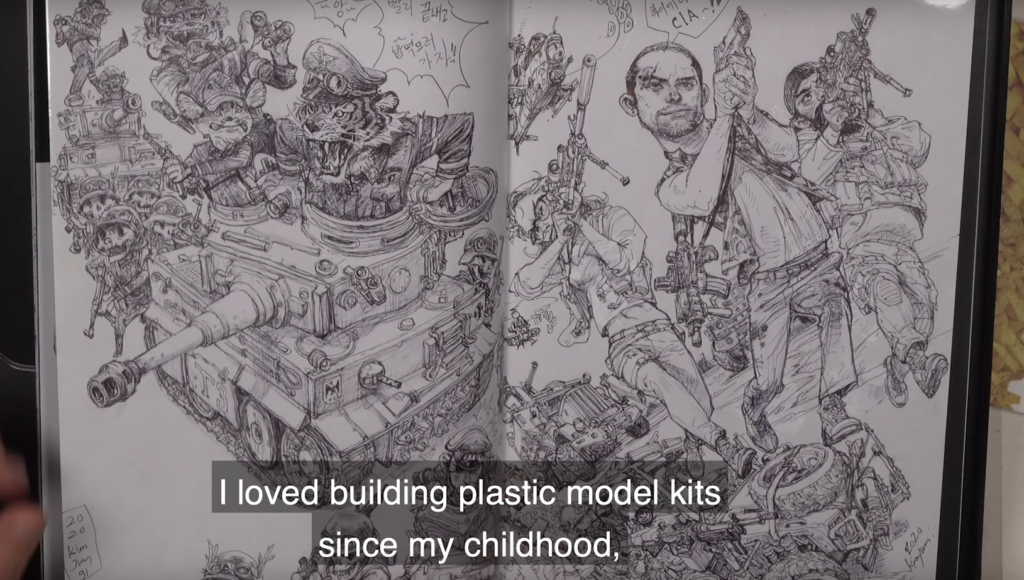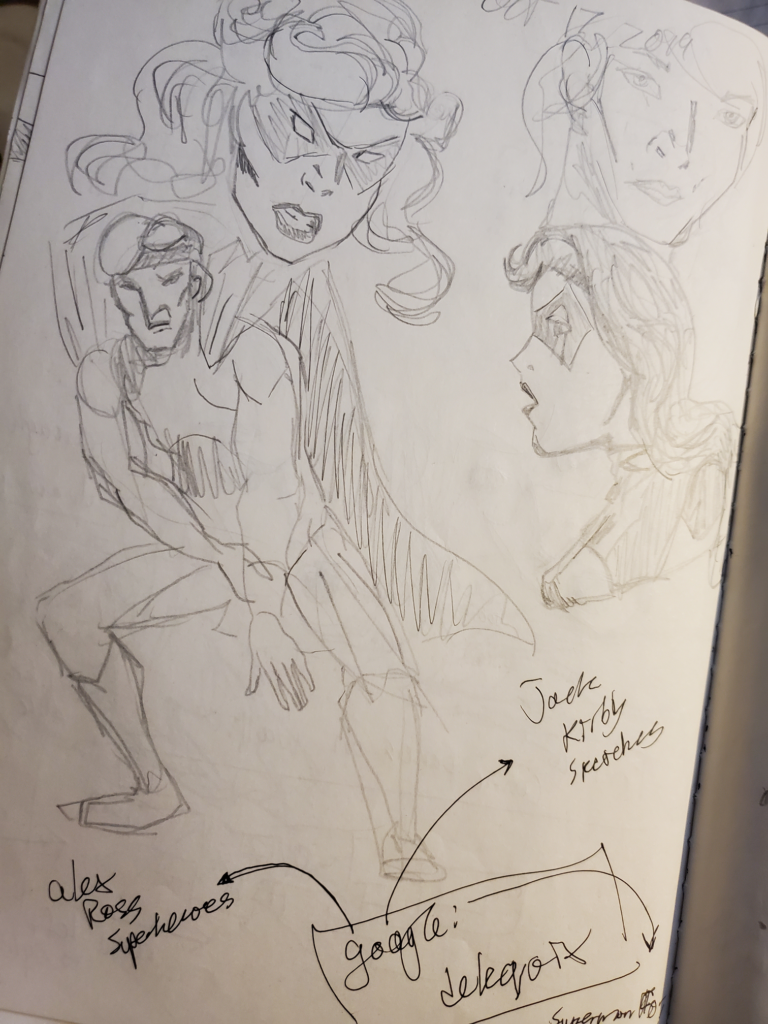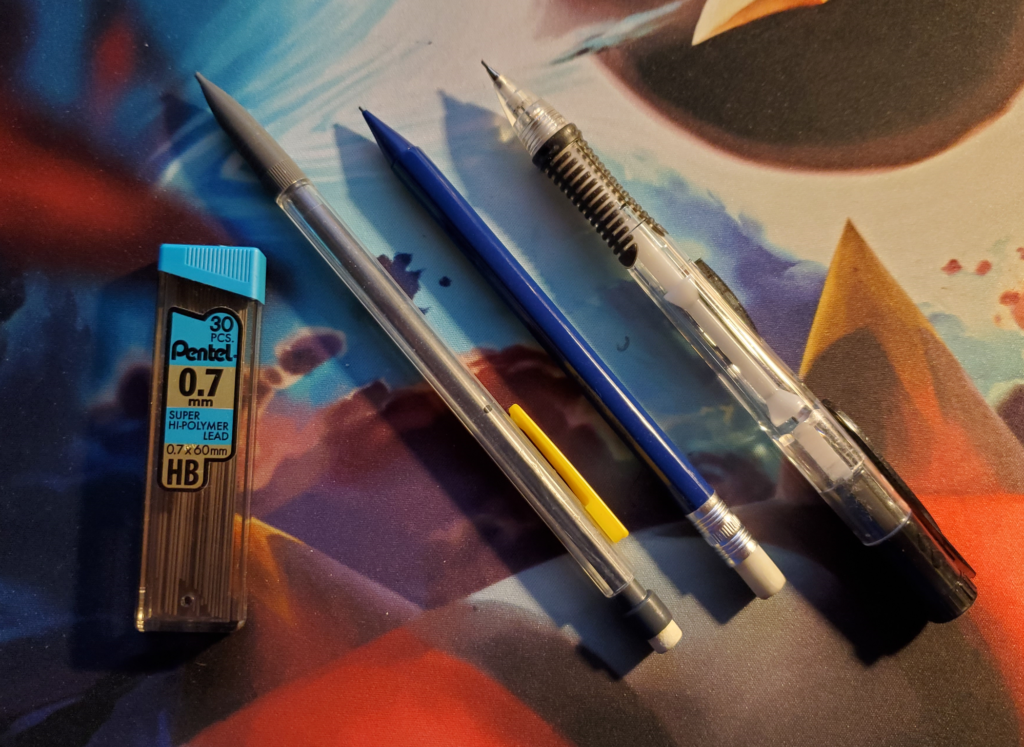A few years ago I wrote a blog post about making a comic: https://www.aaaahh.net/how-to-draw-a-comic/
I have decided to formalize this advice into something that other artists can follow to kick-start their own adventures in comic-making. While the steps written in this post pertain specifically to my own comic-making journey, I imagine that my advice could be applied to many artistic pursuits in the realm of physical media. And physical media is indeed precisely what I hope to encourage here! Digital drawing is convenient, wonderful, and beautiful, but I think learning to draw with paper and a pencil teaches fundamental truths about drawing that digital art tends to obfuscate among beginners. So, without further ado, let’s start with the medium itself, your sketchbook.
Step 1: Acquire a CHEAP notebook and mechanical pencils
Yes, Cheap as in Inexpensive!
You can draw on anything from printer paper to an expensive Moleskine notebook of course, but money creates apprehension. This object is going to be a drawing notebook that you throw into your bag and take with you all over the place; it will be crushed, folded over, and spilled-upon. If you purchase something fancy shmancy, you will be afraid to carry it around and ultimately leave it at home. You must create as little hesitation as possible between yourself and the act of drawing, so if you buy expensive equipment that makes you hesitant to use it, then you have failed yourself.
The notebook doesn’t even have to be branded as a drawing notebook to fulfill its role. In fact, you will probably be up-charged if you try to buy a sketchbook from a big name art supplier. A smaller, local art store, or even just a stationary store, will have what you need. Just look for something smallish and cheap with blank pages (don’t draw on lined paper!).
It AINT gonna be Pretty!
Another thing to recognize about your drawing notebook is that it won’t look very pretty as you fill it up. YouTube sketchbook culture is very misleading; you see tons of videos of established artists showing off pages upon pages of crisp, finished sketches with seemingly perfect line work. This is an illusion that will mentally inhibit you from drawing.

Your drawing notebook isn’t going to look like something pulled off the shelf of Barnes&Noble. And this a good thing.
You don’t want to worry about having to show off a pretty, perfect, brand-name drawing notebook to people. The book is a tool, not a fashion accessory. You must accept the fact that your drawings won’t meet your expectations, so fill pages with abandon! Draw in the notebook as much as you can regardless of style or technique. Scribble if you want to! Your sketchbook must be a place where you are comfortable experimenting or jotting ideas. Every page is a fresh opportunity to draw, so let the apprehension slip away. Fill those pristine pages with your art, bad as you think it is, and when the notebook itself is completely full, get a fresh one and start again!

Over time, you will have chronological stacks of old notebook detailing your artistic journey to browse and show off. You might even find that you like your old art a lot more than you did when you originally drew it. Your worst critic is always yourself.
Spiral Bound Notebooks Suck
You may be tempted to buy a notebook with a metal or plastic spiral binding to it.. don’t! Over time, the notebook takes a beating and the spirals begin to lose their shape. As this happens, the pages of the notebook start to tear and fall out. It can get so bad that the notebook can’t even be opened anymore and just implodes.
Also, the external binding of spirals prevents the edge of the notebook from laying flat, which is sort of annoying on your arm as you draw.
Why Mechanical Pencils?
You can draw with whatever you want. Pens are great, No. 2 pencils are cool. I prefer mechanical pencils for comic art, however, because they maintain the same line width regardless of how much you use them. Over time, standard pencils become blunt and start to draw in different ways as the tip flattens out. They need to be sharpened to maintain uniformity. This means that you have to carry around a pencil sharpener or a knife to keep your pencil in working order, and that level of maintenance to be a hindrance to beginners. Mechanical pencils, on the other hand, can be refilled with some lead and they are good to go for a while. If the tip snaps, just click and keep drawing.
This isn’t to say that a dull pencil isn’t a useful drawing tool. You can accomplish some great shading with a flat pencil, but I preferred to prioritize line consistency.
What do I use?

You are going to have to adapt your materials to what is available to you either locally or online, but for years I have used Muji notebooks for all my sketching needs. That is because they are CHEAP AS HELL. When I first began drawing comics back in 2019 or whatever, you could get a plain paper Muji for a buck fifty. Prices have certainly climbed since, but you are still paying less than $5 for a notebook (which is fine by me). The pages also have this slightly off-white tinge to them that I find pleasing to draw on. Printer paper is too harsh and bright by comparison.
For mechanical pencils, I have a slew of different types. My go-to are these little plastic Staples pencils that I got in a pack of different colors:

I used to own a really nice mechanical pencil… but I lost it 😛
That’s the reality we are working with here; you want to begin with cheap materials so that you do not feel bad about misplacing or damaging them. If you want to begin a lifestyle of drawing often, maybe even every day, then you have to be ready to throw your materials into a bag and move with them when duty calls. Stuff naturally gets lost along the way, and that is okay.